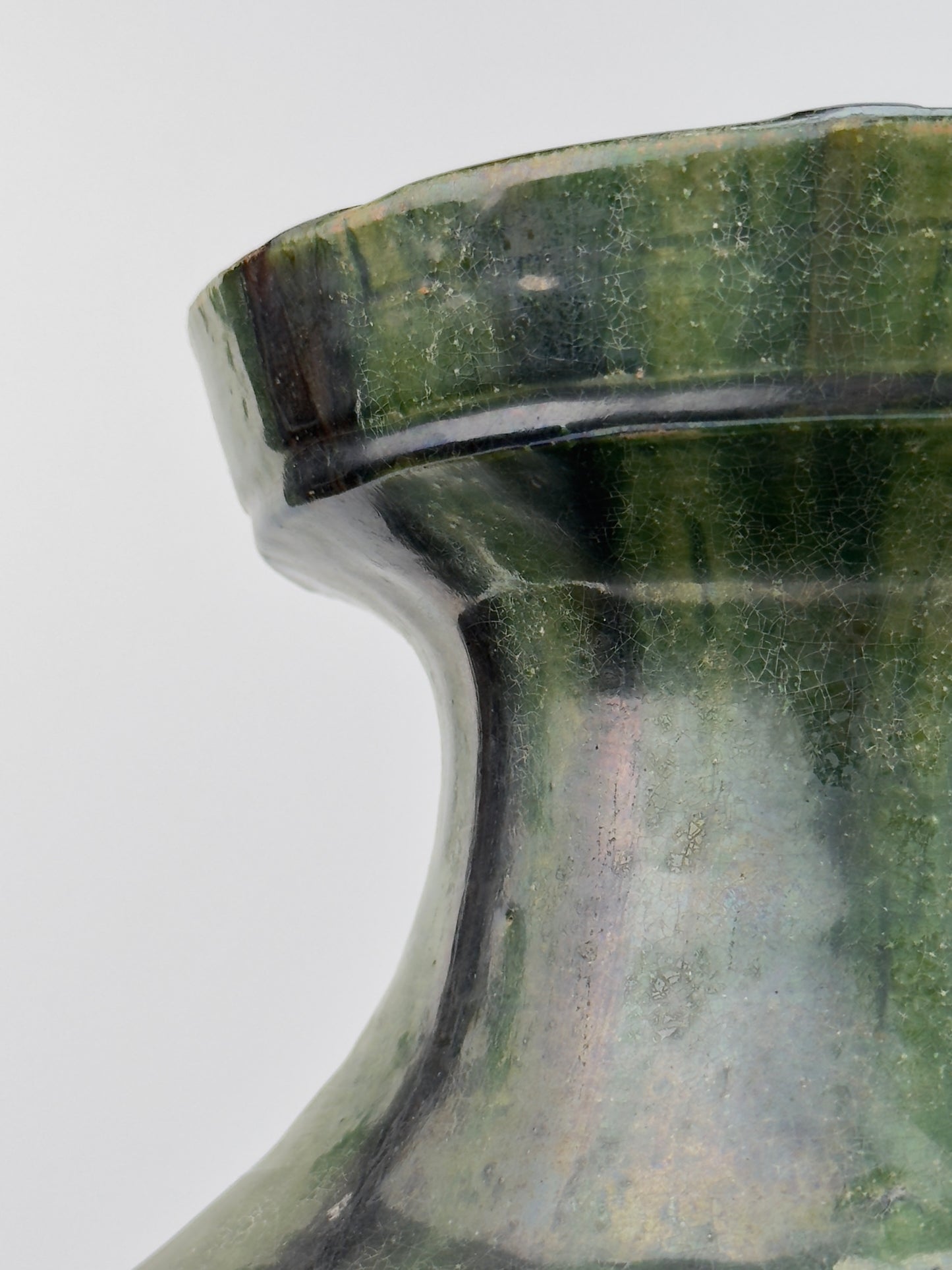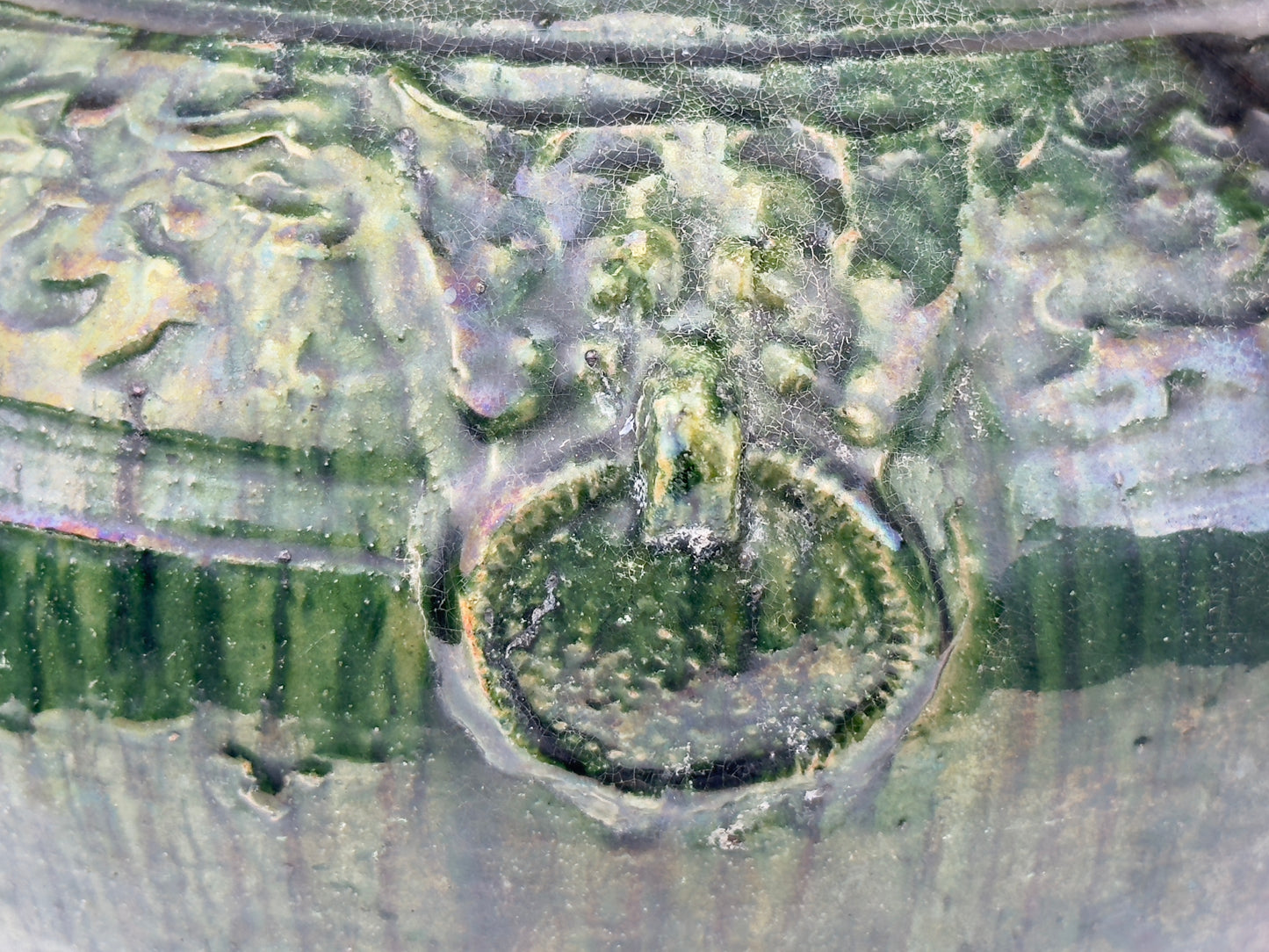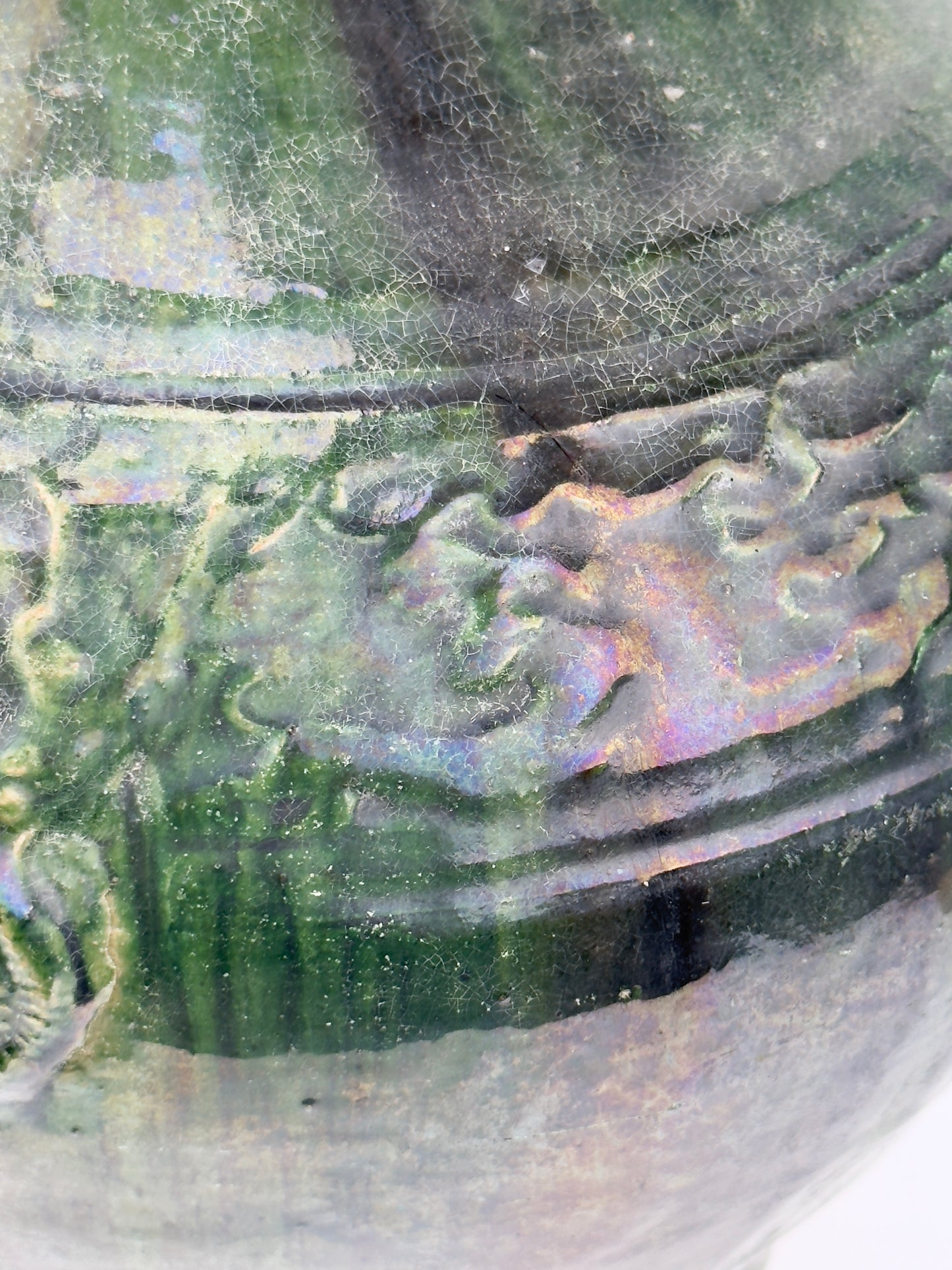AUA Oriental Art
Hu vase with green glaze, Han Dynasty
Hu vase with green glaze, Han Dynasty
Couldn't load pickup availability
It is made from a fairly high-fired reddish pottery and coated in a particularly attractive glossy thick streaky green and finely-crackled glaze, the colour of which varies according to its thickness. "Iridescence" is observed in surface.
Period : Han Dynasty (206 BC - 220 AD)
Medium : Earthenware with Green glaze
Dimension : 15cm(Mouth Diameter) x 35cm(Height)
Provenance : The piece was acquired in Hong Kong in late 1990s.
Condition : Excellent (Chips on surface)
Reference :
1) V&A Museum - Accession Number C.245-1909
(Type : Closely related)
https://collections.vam.ac.uk/item/O136469/vase-unknown/
2) National Museum of Taiwan - Object Number 79-00338
(Type : Closely related)
https://tcmb.culture.tw/zh-tw/detail?indexCode=MOCCOLLECTIONS&id=14000077101
* Han Dynasty Pottery
Han Dynasty pottery, originating from one of China's most significant historical periods (202 BCE – 220 CE), is renowned for its technological and artistic achievements in ceramic production. These artifacts typically feature a distinctive green glaze, although other colors were also used. The pottery often includes intricate decorative motifs, such as animals, mythological figures, and geometric patterns.
The craftsmanship during the Han Dynasty was advanced, with pottery techniques that were innovative for the time. These pieces were not only utilitarian but also held ceremonial and symbolic significance. The shapes and designs of Han Dynasty pottery vary, including items like urns, vases, and figures, reflecting both the daily life and the spiritual beliefs of the period.
Share




































